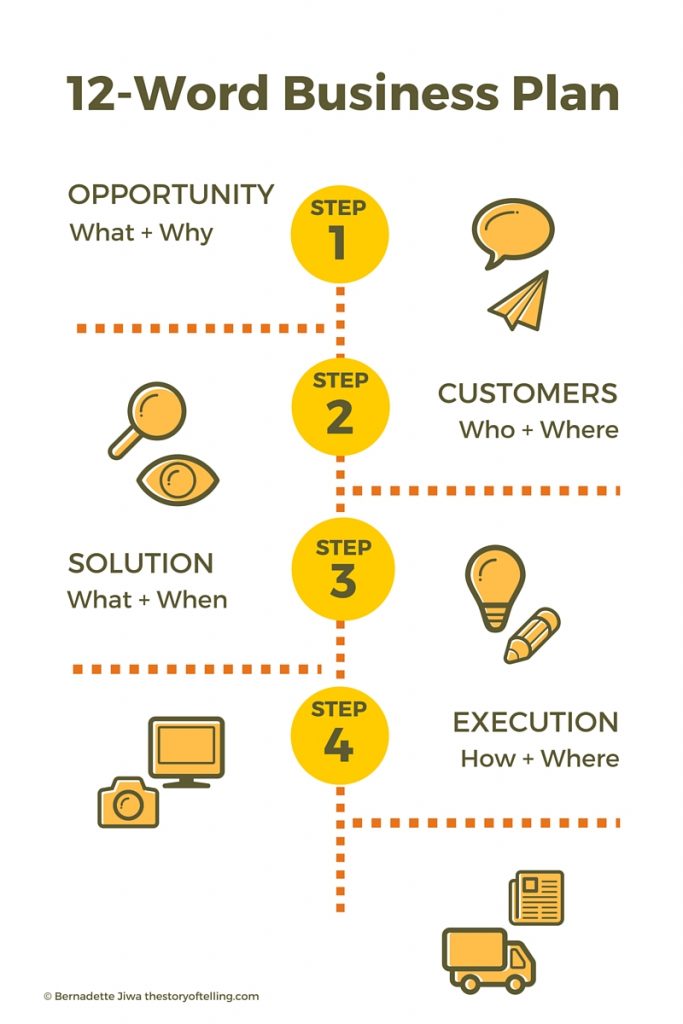Unlock the Magic in Your Story Now
Get the Free 20 questions to Ask Before Launching Your Idea workbook when you sign up for occasional updates.
Get the Free 20 questions to Ask Before Launching Your Idea workbook when you sign up for occasional updates.
How We Drive Change
 When we want to improve our diet we monitor what we eat and how much we exercise. When we want to change a toddler’s behaviour we look for opportunities to praise the good, instead of constantly shouting down the bad. We measure and reward the behaviour we want.
When we want to improve our diet we monitor what we eat and how much we exercise. When we want to change a toddler’s behaviour we look for opportunities to praise the good, instead of constantly shouting down the bad. We measure and reward the behaviour we want.
In organisations, the things we measure and reward get, prioritised, managed and done. Not surprisingly when bonuses are paid to employees for closing deals and improving the single bottom line, that’s the thing they will make most effort to change.
We can talk to our teams until we’re blue in the face about the need to improve customer service or the importance of innovation to long-term success, but if we’re not monitoring, measuring and rewarding this behaviour we’re unlikely to see as much of it as we’d like.
If you want to improve customer engagement, measure and acknowledge customer delight. If you want to be more progressive, measure and recognise initiative. Change doesn’t start where we expect it to happen. It starts at the place where it’s lead.
Image by roujo.
Share this article
A Reason To Come
 “Hey! Are you after some lunch?” asked the young woman on the pavement waving flyers during the 1 pm rush. She gestured to a place on the side street as she tried to lure people down it with the promise of a discount.
“Hey! Are you after some lunch?” asked the young woman on the pavement waving flyers during the 1 pm rush. She gestured to a place on the side street as she tried to lure people down it with the promise of a discount.
Most diners who eat at a restaurant down a side street go there on purpose. They’ve heard about it from a friend or a guide book. Side streets are for the kind of place that doesn’t need flyers or cajoling to get people to visit. Side street businesses give people a good reason to be there.
Every business has a choice. We can build for the main street where we have the chance of being accidentally discovered, or we can build for the side street and give people a reason to come.
Are you hoping to be discovered or giving people a reason to come?
Image by Charles Van den Broek.
Share this article
The Value Story
filed in Marketing, Storytelling, Strategy
 During Tulip Mania, the new merchant class who wanted their gardens to reflect their newfound success, is said to have traded acres of land for a single flower bulb. The scarcer the bulbs became, the more valuable they were perceived to be. As a commodity, the tulip’s inherent value was derived from the fact that there were more buyers than tulips.
During Tulip Mania, the new merchant class who wanted their gardens to reflect their newfound success, is said to have traded acres of land for a single flower bulb. The scarcer the bulbs became, the more valuable they were perceived to be. As a commodity, the tulip’s inherent value was derived from the fact that there were more buyers than tulips.
It wasn’t a sustainable business model.
Today we live in an age of abundance, where it’s becoming more difficult to sustainably create value with a purely status driven, scarcity strategy. Luxury brands like Gucci, Prada and Ralph Lauren are experiencing tough times as they struggle to remain relevant and profitable.
As people’s values change, their value story changes too. What millennials value and invest in,
is different to what their parents were prepared to spend money on.
All business success depends on the business’s value creation story aligning with the customer’s value story. We not only succeed by being important and useful to our customers. We win by being worthy of their time, attention and financial outlay. Our brands become valuable not simply by creating value in the moment, but by valuing and adapting to the changing narrative of the people we serve.
It’s pointless shouting about how great your tulips are to a customer who wants to grow thyme.
Image by Hammerin Man
Share this article
How Will You Win?
filed in Storytelling, Strategy
 All success at some level is about winning. Not necessarily coming first, but certainly reaching some kind of goal or destination. The truth is that most of us are terrible at articulating exactly what the plan to get there is. The ability to do this is probably the single most important competitive advantage of all successful entrepreneurs.
All success at some level is about winning. Not necessarily coming first, but certainly reaching some kind of goal or destination. The truth is that most of us are terrible at articulating exactly what the plan to get there is. The ability to do this is probably the single most important competitive advantage of all successful entrepreneurs.
Answering this question forces us to put a stake in the ground, to get specific, to stop being vague about where our true advantages lie. Once you commit to that goal, you begin to articulate and take action on the steps to get there.
Imagine how other entrepreneurs might have answered this question:
Dollar Shave Club
We will win by providing a better quality product direct to our customer at a fair price.
Everlane
We will win by being the most transparent fashion brand on the planet.
Little Flowers
We will win by making the gesture of flower giving simpler and more affordable.
You don’t have to be first to break the tape, but you need to know how you’re going to make it across the finish line. How will you win? What do you need to do now and next, in order to do that?
Image by Philo Nordlund
Share this article
The 4 New Stages Of Customer Engagement
 The commercial reality for any business is that sales keep the lights on. We’re still following rules that were proposed in the late 1800s by Elias St. Elmo Lewis in order to do that.
The commercial reality for any business is that sales keep the lights on. We’re still following rules that were proposed in the late 1800s by Elias St. Elmo Lewis in order to do that.
“The mission of an advertisement is to sell goods. To do this, it must attract attention, of course; but attracting attention is only an auxiliary detail. The announcement should contain matter which will interest and convince after the attention has been attracted.”
And so the marketing and sales funnel followed this four-step process for over a hundred years.
Attention —> Interest —> Desire —> Action
A lot has changed since 1800. Yes, we still need our customers to take action, but we now have the opportunity to help them do that in a much more sustainable way. The crucial difference comes in the middle of the funnel where trust and affinity are built.
Awareness —>Trust —> Affinity —> Action
The irony is that as marketers we still focus most of our energy at either end of the funnel, creating awareness and trying to close the sale. The kind of long-term customer relationships you want don’t happen because the text on the ‘buy now’ button says the right thing. They are fostered when the customer trusts your brand to be the kind she wants to be aligned with and come back to.
Image by Erik
Share this article
Consumers Don’t Just Want Better Products, They Want Better Narratives
filed in Marketing, Storytelling
 Sixty years ago, when the world was smaller, people wanted to pay once for something and for the thing to last. We transitioned to an era where we no longer knew as much about the provenance of a product. That fact changed our perception and expectations of quality. We were a little more forgiving as long as the price and the quality story matched. Today though consumers want both.
Sixty years ago, when the world was smaller, people wanted to pay once for something and for the thing to last. We transitioned to an era where we no longer knew as much about the provenance of a product. That fact changed our perception and expectations of quality. We were a little more forgiving as long as the price and the quality story matched. Today though consumers want both.
It’s not enough to have a great product, that’s well-made. Savvy customers want to know its backstory. More and more people are keen to understand that the things they invest in were made with care and intention. They want the product story to reflect an understanding of the context of their story. They want us to demonstrate that we know why they are buying this particular product, and how it shapes their lives and their narrative.
Customers don’t just want us to make things better. They want us to have and tell better stories.
Image bt Trekking Rinjani
Share this article
Evaluating Opportunities
 Opportunities are presented to us every day. It’s not always easy to discern which ones are worth taking and which ones to pass on. What questions do you ask yourself before you decide which to pursue or pass up?
Opportunities are presented to us every day. It’s not always easy to discern which ones are worth taking and which ones to pass on. What questions do you ask yourself before you decide which to pursue or pass up?
10 Questions For Evaluating Opportunities
1. Why are we considering this opportunity?
2. What’s the biggest risk?
3. Do the potential gains outweigh the possible disadvantages?
4. How can we take advantage of the opportunity while mitigating against the risks?
5. How exactly will this help our brand?
6. What will success look like?
7. Are we happy about how much control we will have over the outcome?
8. Do the values of the potential partners closely align with ours?
9. If we say ‘yes’ to this what will we have to say ‘no’ to?
10. Does this feel like the right thing to do?
It’s better to question now rather than later.
Image by Jaine.
Share this article
Who First?
filed in Marketing, Storytelling
 The realisation of an opportunity to solve a problem for a specific group of people is at the heart of every business success story. Sometimes the potential customer already knows their problem or need exists, but often they are not actively looking for a solution.
The realisation of an opportunity to solve a problem for a specific group of people is at the heart of every business success story. Sometimes the potential customer already knows their problem or need exists, but often they are not actively looking for a solution.
It’s hard to give answers to people who are not asking questions.
As a marketer, you have two choices. You can convince the non-believers that they want what you have, or you can find and serve a core group of people who are open to trying something new or different—then help them to succeed wildly and give them a story to tell.
The Colour Run started with one event and 6,000 participants in 2011. The following year 600,000 participated at 50 events across America. It turned out that a lot of people felt excluded from running events, but they would take part if events were less competitive and more fun. Those first customers were the hardest to get and the most important to please.
Who are you planning to reach first and what story will you give them to tell?
Image by Thomas Hawk.
Share this article
The 12-Word Business Plan
 Have you ever struggled to illustrate or articulate how your business or idea creates value?
Have you ever struggled to illustrate or articulate how your business or idea creates value?
This 12-word framework is the simplest way to do it.
Take a look at how we could map Blue Apron’s business plan using the 12-word framework.
Blue Apron’s 12-Word Business Plan
OPPORTUNITY
People want to eat healthy, home cooked meals, but they don’t have the time and skills to cook.
CUSTOMERS
Health conscious, time poor, couples and families in urban centres.
SOLUTION
Fresh, competitively priced meal kits, conveniently delivered to the customer’s door every week.
EXECUTION
Step-by-step recipes designed to help customers succeed and save time on meal planning.
Seasonal ingredients sourced directly from farmers and producers. Freshness and quality are assured.
Portioned ingredients, means no waste.
Customers choose and pre-order kits online, saving time on meal planning and grocery shopping.
Free delivery at times to suit customer’s schedule. No more battling traffic and supermarkets.
Healthier, more convenient, fun and less wasteful than meal planning, shopping, and preparation.
We win by sourcing well, bulk purchasing, predicting demand, managing distribution, scaling, supporting suppliers and delighting customers.
Over to you. What does your 12-Word Business Plan look like?
Image by Giselle Leung.
Share this article
What Is A Strategy?
 In business, we use words that are designed to help us to better understand, articulate and achieve our objectives. Often those same words end up doing exactly the opposite. ‘Strategy’ is one of those words that can tie us up in knots if we allow it to.
In business, we use words that are designed to help us to better understand, articulate and achieve our objectives. Often those same words end up doing exactly the opposite. ‘Strategy’ is one of those words that can tie us up in knots if we allow it to.
Imagine you’re on a riverbank. The place you want to get to—your destination is on the other side.
There is no bridge in sight and no obvious way to cross. There might be others on the riverbank trying to cross at the same time. You need a plan to get from here to there. So, you make a decision to cross the river at this spot, rather than keep heading upstream. The goal is to reach the other side within a set period of time and to monitor your progress as you go. You’ve committed to a plan—this is your strategy. The strategy doesn’t detail how exactly you will get across.
Next, you decide that you’ll use stepping stones to create a walkway, rather than build a boat to row across. Decisions like what kind of stones you’ll use, where you’ll get them from or who’ll be responsible for working out how far apart they’re placed are tactical.
When we break this down it looks something like this:
GOAL = DESIRED OUTCOME
STRATEGY = COMMITMENT + PLAN
TACTICS = PROCESS + ACTIONS
Or expressed another way:
GOAL = THE WHY & WHAT
STRATEGY = THE WAY
TACTICS = THE HOW TO
Rising river levels or bad weather might mean you have to change tactics but the strategy remains the same, if and until you discern that it isn’t the best way to achieve your goal. Then you pivot, but that’s a whole other story.
The best example of a strategy you are likely to see is Amazon’s—as detailed by Jeff Bezos is his annual letter to shareholders starting back in 1997. When you can get as clear as Jeff you know you’ve got a strategy.
Image by Haldean Brown.